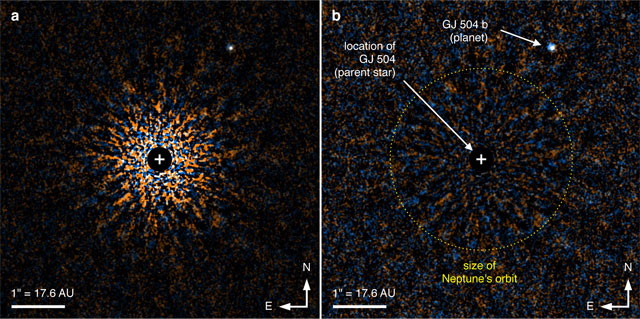Subaru Telescope’s Imaging Discovery of a Second Jupiter Shows the Power and Significance of the SEEDS Project
| Science
Astronomers in the Strategic Explorations of Exoplanets and Disks with Subaru (SEEDS) Project have recently discovered and captured an image of the least massive planet ever imaged so far--a so-called “second Jupiter” (Figure). This discovery marks an important step toward the direct imaging of much fainter Earth-like planets in the future and may lead to new models of planet formation. It also illustrates the important role that the SEEDS Project plays in observational astronomy.

The scientific paper on which this article is based will appear in the Astrophysical Journal.
(Kuzuhara et al. 2013, “Direct Imaging of a Cold Jovian Exoplanet in Orbit around the Sun-like Star GJ 504”, The Astrophysical Journal, in press)
Link
This article is including a link to a article for kids.
It's a Small World After All Printer-friendly
 Space Scoop | UNAWE
Space Scoop | UNAWE
The Universe Awareness website provides children through the world with fun, easy to understand news and educational materials about the Universe. These help kids understand the size and beauty of the Universe. The “Space Scoop” section of Universe Awareness contains articles written for kids explaining current astronomy news. A Space Scoop is available for this article.